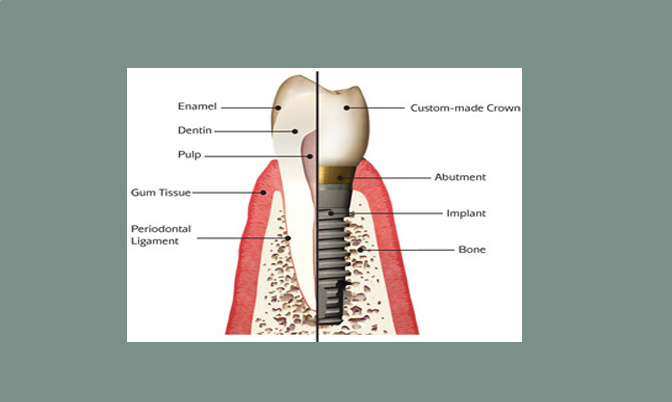Crown
When a tooth has rotten intolerably, has damaged, or is fragile due to prior treatments, a synthetic crown is often best to replace the damaged natural crown. This process takes two or three office visits.
The choice of materials for the provided the roots and bone structure that support the tooth are healthy and strong, a dentist can prepare the tooth for the crown by reshaping it to precise design principles to accommodate a crown.
If the foundation for a crown is too weak, root canal therapy is needed so that a metal post might be placed in the root(s) for further support. If still the bone that supports the root of the tooth is too weak, the dentist may not recommend the placement of a crown at all, as the tooth may only last a few more years.
The crown must be cautiously created to fit the prepared tooth and also fit against the opposing tooth to guarantee a correct bite. Accordingly the dentist must take correct measurements in the shape of impressions of both jaws and the particular bite, which the ceramic laboratory needs to work with. At the end of the preparation appointment the tooth, which is to be crowned, is covered with a temporary crown made of acrylic or occasionally a soft aluminum so as to protect and stabilize it until the next appointment.
At the second visit, the dentist will check and fit the crown over the prepared tooth and if all’s well, the dentist will cement it permanently. The sturdiness of crowns depends upon many elements but usually the structure of a crown is able to last a lifetime. Nevertheless, it is not unusual for crowns to require replacement after twenty years of use.
Tags: Canadian Dental List, DEntal services List, Dentists Directory Canada
